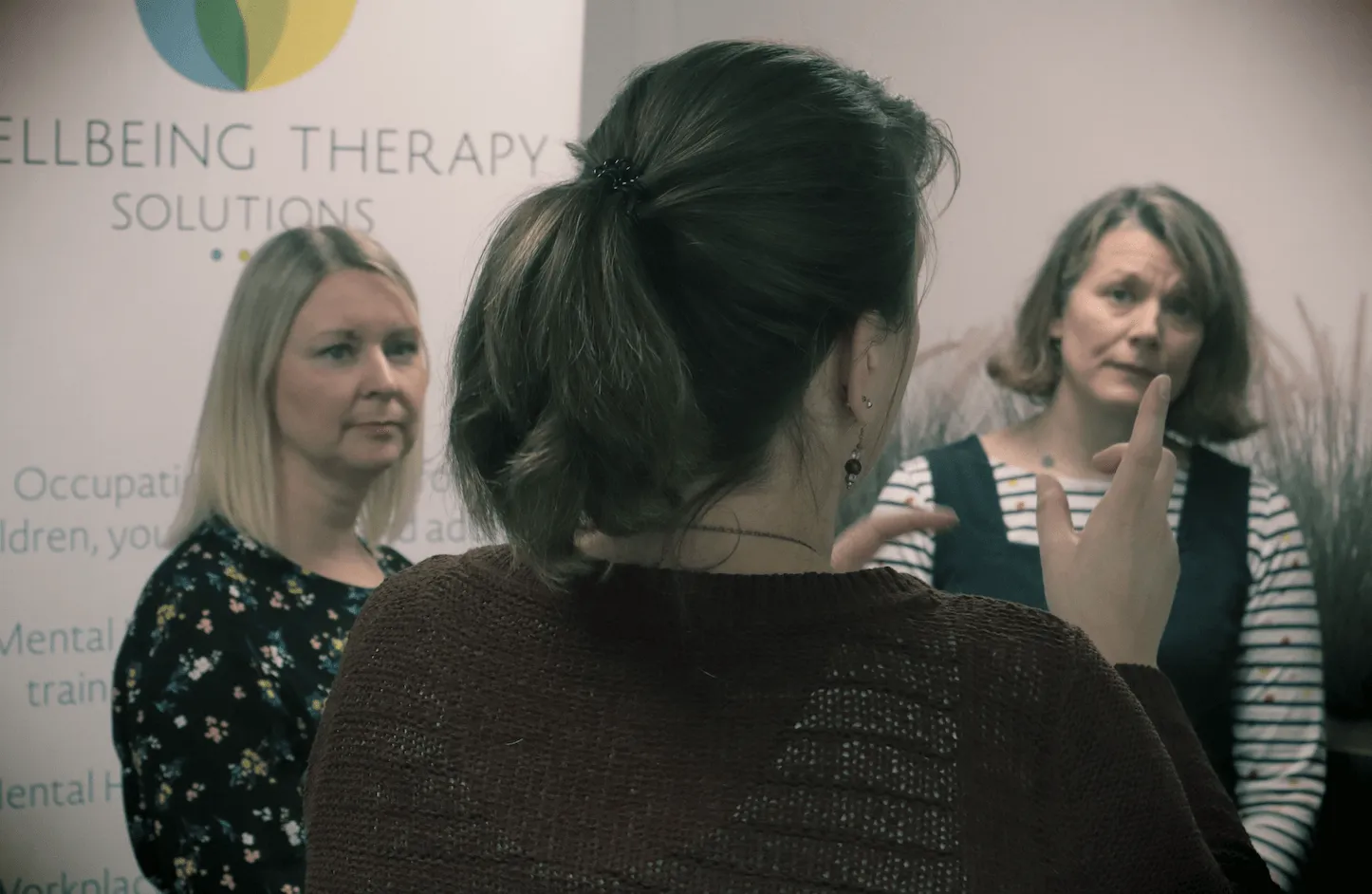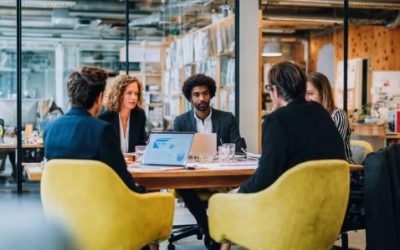
OT Marjolein Cleaver speaks with MD Kate Jackson (left) and new OT Rebecca Woods (right) at WTS’ new premises.
Team excited by bright, welcoming and comfortable new premises
Wellbeing Therapy Solutions are heading into 2022 with a bang!
Due to incredibly high demand for its services during 2021, the therapy provider is moving into expanded premises with a greatly extended team.
Wellbeing Therapy Solutions will share lovely new modern premises on Braunstone Lane near Leicester with the Bodie Hodges Foundation, a very popular Leicestershire-based charity, which provides amazing support for families bereaved of a child.
The new building has free parking and will be fully-equipped with calming therapy rooms, toilets, a kitchen and a waiting area for families and friends.
Moving into specious new premises has allowed MD Kate Jackson to expand her team with the addition of four new occupational therapists who all bring different backgrounds and experience to the set-up.
Kate, along with current OT Marjolein Cleaver will be joined by Beth Gardiner, Rebecca Woods, Clare Pinchess and Lindsey Mitchell for what promises to be a very busy 2022.
“I am incredibly excited to have brought a group of OTs to the business who have such a wide range of experience and who are all united in our drive to offer support to as many people as possible during these challenging times,” she said.
“To be able to link up with the tremendous people at the Bodie Hodges Foundation is amazing too and means that we can share a lovely, modern building that offers space, warmth and light to create a welcoming environment that visitors feel comfortable in.
“I have been looking long and hard for new premises and this is the ideal setting for where I would like to take our services in the future.”
Wellbeing Therapy Solutions are open for one-to-one bookings for the New Year for both adults and young people.
Find out more about the services available by emailing kate@wellbeingtherapysolutions.co.uk or visiting www.wellbeingtherapysolutions.co.uk
Read more: How therapy works with us at Wellbeing Therapy Solutions
WATCH: Video – Meet the Bodie Hodges Foundation’s Kellie Charge and learn about the charity’s amazing work…










